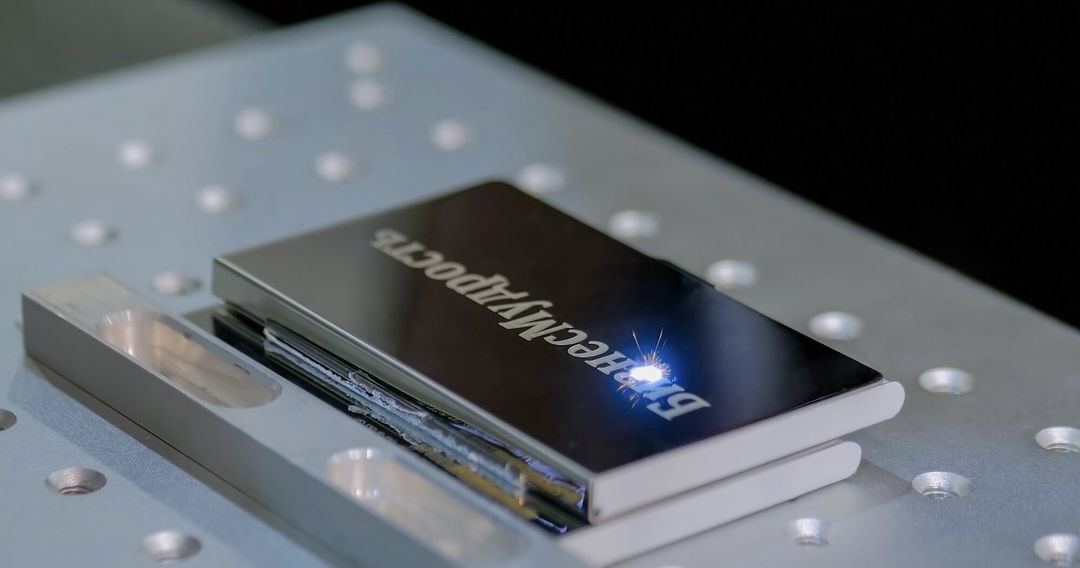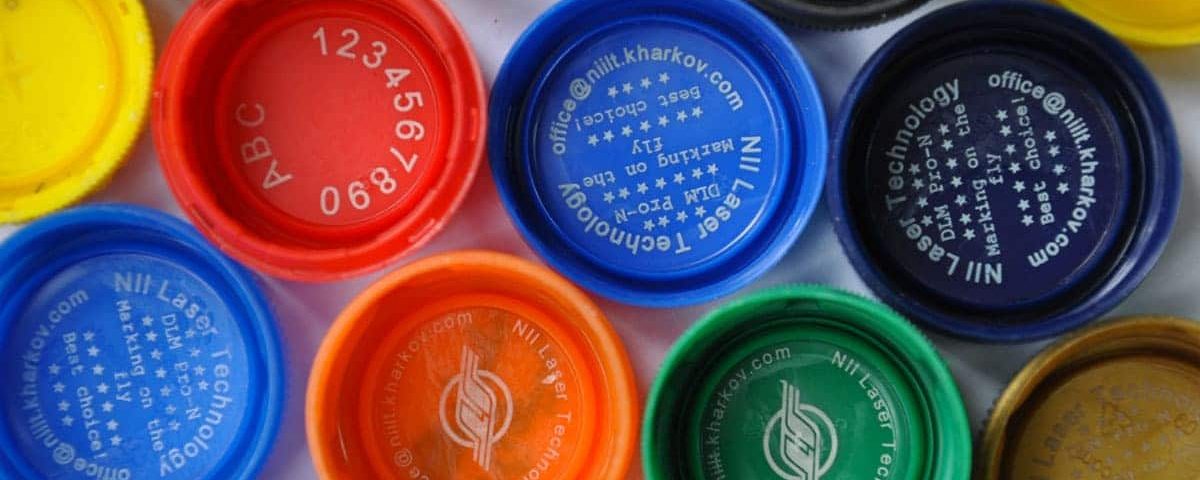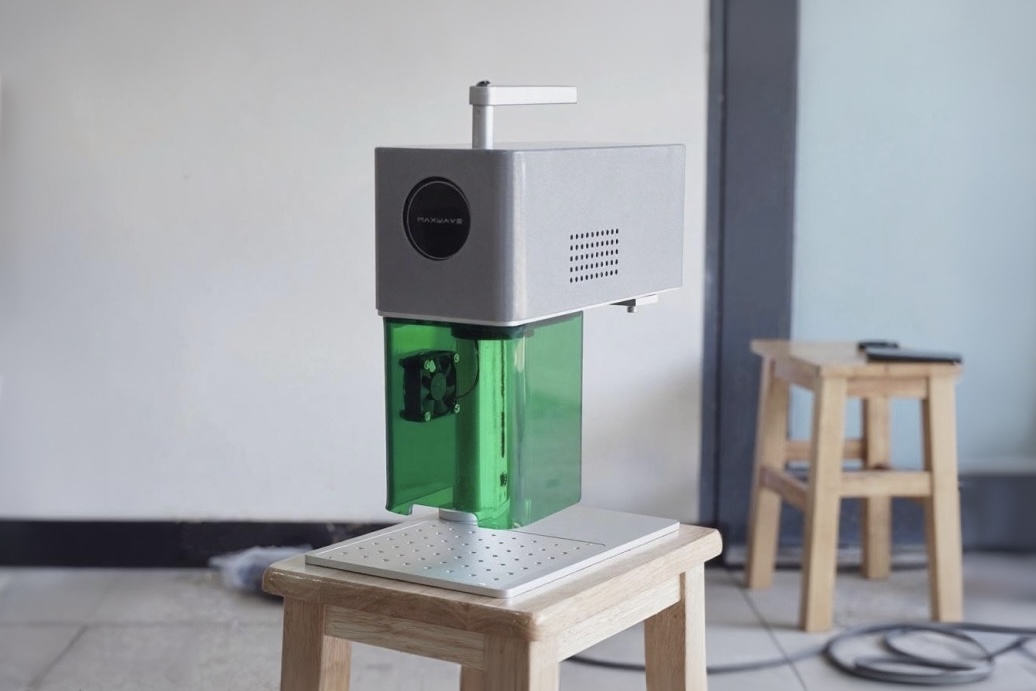Ready to dive into laser marking but feeling overwhelmed by all the choices? Whether you’re customizing products, upgrading production, or starting a new venture, picking the right laser marking machine is more than a purchase—it’s a smart investment. You don’t need to be a tech expert to get it right. This guide will walk you through the key things to consider, so you can choose with confidence—and maybe even snag a great deal.
What Materials Will You Be Marking?
The material you plan to mark plays a key role in choosing the right laser marking machine. Not all lasers are compatible with all materials—each type performs differently on metals, plastics, and organic surfaces.
Laser Marking for Metals
Fiber lasers are ideal for marking metals like stainless steel, aluminum, brass, copper, and even gold. For brass, a 30W+ fiber laser delivers bright, clear results. Copper, being highly reflective and conductive, requires short pulse durations (10–20 ns) and high scan speeds. Industries such as aerospace, automotive, and medical rely on fiber lasers for durable, high-contrast markings. Even mirrors can be marked, as long as power levels are precisely controlled for safety.
Organic Materials: Wood, Leather, Paper, and Glass
Plastics: What Works and What to Watch Out For
You can use both CO₂ and fiber laser marking machines on common plastics like ABS, PMMA (acrylic), PA, PE, PP, PI, and PET. The results will change based on how the plastic absorbs the laser light.
Polycarbonate (PC): – A CO₂ laser won’t work on it if it’s clear. If the polycarbonate is colored, it might work with a laser.
Plastics to Avoid: – PVC (Polyvinyl Chloride) and vinyl release dangerous chlorine gas. This can damage your laser’s optics. You should not try to mark these. – Polystyrene and some foams can melt, which risks messing up your machine.
Other Special Materials
For rubber and textiles, both fiber and CO₂ lasers work, though marking depth and speed vary. For stone and ceramics, use CO₂ lasers due to their hardness. Acrylic is also best marked with CO₂ lasers, commonly used for signs and displays.
My Key Points and Recommendations
Fiber lasers marker are ideal for metals, some plastics, and industrial applications. CO₂ lasers suit organic materials, glass, acrylic, and some plastics, but not reflective metals. For high-precision marking on metals and select plastics, consider ND:YAG lasers. Always verify your material’s compatibility to ensure safety and meet industry standards before buying.
What Is Your Application for a Laser Marking Machine?
To pick the right laser marker, I always ask: what do you need? Do you require deep, durable marks? Or is a simple, readable code on the surface enough? Let me walk you through the marking methods and lasers I suggest for different jobs.
Deep Engraving: For Long-lasting, High-wear Parts
Ideal Use Cases: Use this method for high-wear parts like car components, aerospace parts, firearms, and industrial tools. It creates durable marks that remain readable even after scratching or coating. It also meets engraving depth requirements for safety and traceability standards.
Tech & Performance: In my experience, fiber lasers and strong diode-pumped lasers are the best for deep engraving metals. You can achieve significant depth with these lasers. They can engrave over 0.1 mm, and I have seen them go deeper than 1 mm per minute on metals, depending on the laser’s power.
Practical Example: We deep-engraved cutting tools for heavy machinery. The marks stayed clear and durable in harsh, abrasive conditions, ensuring traceability.
Surface Etching: Fast, Shallow, Visible Marking
Industries & Materials: This method is widely used in automotive, electronics, and manufacturing for marking labels, QR codes, and logos. Use fiber or diode-pumped laser marking machines for metals, and CO₂ laser marking machines for plastics, wood, ceramics, and glass.
Key Details: This process produces shallow marks up to 0.02 mm deep, perfect for readable identification without changing the surface. Etching is a fast, cost-effective option for marking large batches.
Case in Point: Car manufacturers use etching on engine parts. This provides clear traceability for their supply chain.
Annealing: Smooth, Rust-Proof Color Changes
Why Choose Annealing: I recommend this for medical and aerospace fields where permanent, smooth, rust-free marks are needed on stainless steel tools, implants, and titanium parts.
How It Works: A fiber laser heats metal to form a smooth, colored oxide layer—usually black or dark gray. Annealed marks like these are durable and hygienic, meeting industry standards.
Notable Point: From my experience, this is perfect for instruments that need tracking marks but must also keep their original finish and not rust.
High-Precision & Sensitive Material Marking
How I Use UV Lasers: For very fine details on delicate materials, I suggest a UV laser marker. It’s great for sensitive plastics, tiny electronics, or security features like codes thinner than 0.1 mm. This laser marking machine uses very little heat. It will not warp or damage the material, which is why it is my top choice for medical and high-tech work.
My Thoughts on CO₂ Lasers: A CO₂ laser is an excellent and affordable choice for surface etching on wood, acrylic, fabric, and glass. Just remember, it is not powerful enough for deep metal engraving.
My final recommendation is to base your choice on three things: how you will use the mark, the material you are working with, and any industry rules you must follow for durability or safety.
What Is the Size of Your Parts and Required Marking Area?
When I pick a laser marking system, I focus on two key things. You should consider the size of your parts and the marking area you need. These points will affect the machine’s abilities, its performance, and how smoothly your work goes.
Part Size
Make sure to know the maximum dimensions (length, width, height) of the parts you need to mark. Large parts require a laser marking machine with a sufficiently sized worktable, while smaller parts can use more compact machines that offer better precision and efficiency. Also, consider the part’s shape—complex or irregular shapes might need rotary attachments or multi-axis positioning systems for accurate marking.
Marking Area Size
Determine the size and shape of the marking area. Larger areas need lasers with wider scanning ranges or higher power for consistent quality, while small areas require high-precision lasers with small spot sizes for detailed marks. Material type and marking size also affect speed and heat impact.
Overall Considerations
Worktable size, scanning range, and power must be matched to the part size and marking needs. Using oversized equipment leads to extra costs, while undersized machines may fall short. Clear size specs help manufacturers recommend the right model and simplify purchasing.
What Is Your Laser Marking Machine Budget and Total Cost of Ownership?
From my experience, your budget for a laser marking machine is more than the initial price. You should consider the true total cost of ownership (TCO). To make a smart investment, you need to understand both the upfront expenses and all the other costs that come later.
Typical Price Ranges for Laser Marking Machines
- Fiber laser engravers: $3,500 – $28,500
- CO₂ laser marking systems: $4,500 – $70,000
- UV laser marking machines: $7,297 – $30,000
Example Prices:
– MaxWave UV Laser Marker: About $3,500
– MaxWave FR40 CO₂ Laser Marker: $2,480
– MaxWave 20W MOPA fiber laser marking machine: $2,600
– MaxWave MW-F25CA Dual Light Aource Laser Marker (10+5 Watts): About $1,200
– Industrial CO₂ (e.g., 120W CO₂ + 60W MOPA): $63,999
– Industrial CO₂ systems: $14,297 to $22,497 (depends on work area and features)
Ongoing and Hidden Costs—What to Plan For
Maintenance: I suggest you factor in routine service, replacement parts, and the laser source’s lifespan. These costs add up.
Utility Needs: Some laser machine of marking need special power, like 240 V at 30 A. They can use up to 3,800 W.
Consumables: Lasers use very few consumables. This saves a lot of money compared to using ink or chemicals.
Training, Setup, and Downtime: I recommend planning for the time it takes operators to learn and to set up the machine.
Warranty & Support: A better warranty or faster support costs more upfront. For example, MaxWave offers a two-year warranty and lifetime technical support. In my opinion, this is worth the investment to prevent expensive problems later.
Budgeting Examples and Scenarios
Startups on a Tight Budget: I find that entry-level fiber laser marking machines from $2,400–$8,000 are a good starting point. These machines usually have smaller work areas and basic functions, but they get you into industrial marking.
High-Volume, Large-Scale Production: If you plan for high-volume work, a budget of $20,000–$60,000+ will get you a faster, larger, or more automated system.
International Buyers: I suggest you add 15–25% to the machine’s cost for extra taxes, duties, and shipping.
Market Insight
The global laser marking market is valued at $3.91 billion this year, meaning there are many products available. With strong competition, you can find great deals by doing careful research.
Summary
Choosing the right laser marking machine doesn’t have to be complicated—especially when you know what to look for. By understanding your materials, marking needs, and support options, you’re already one step ahead. Whether you’re marking metal, plastic, or wood, the right machine can save you time, boost your brand, and grow your business. If you’re ready to make a smart investment, now’s the time to act. Explore your options, ask the right questions—and choose a laser marking machine that works as hard as you do.




